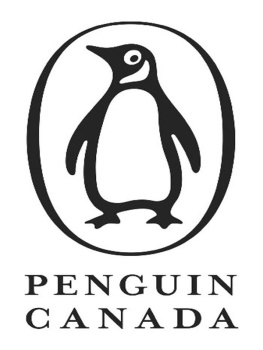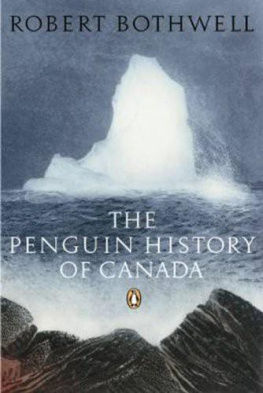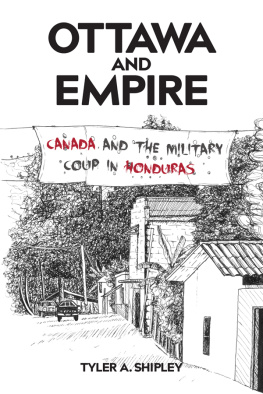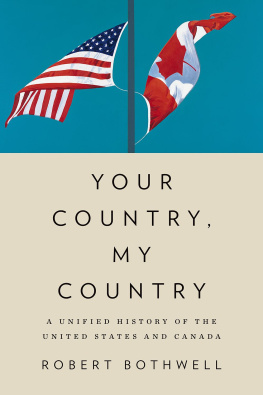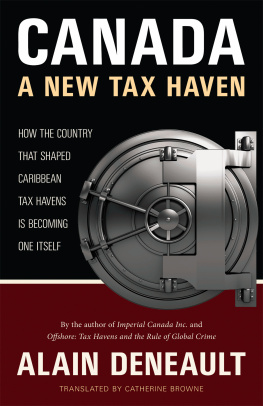PENGUIN CANADA
THE PENGUIN HISTORY OF CANADA
ROBERT BOTHWELL is a professor of history and director of the International Relations Program at the University of Toronto. He has written books on a wide variety of topics in Canadian history, from atomic energy (Eldorado: Canadas National Uranium Company and Nucleus) to FrenchEnglish relations (Canada and Quebec) to CanadianAmerican relations (Canada and the United States).
ALSO BY ROBERT BOTHWELL
Lester Pearson
C.D. Howe (co-author)
Canada Since 1945 (co-author)
Canada 19001945 (co-author)
Eldorado
Loring Christie
Nucleus
Pirouette (co-author)
Canada and Quebec
The Big Chill
A Travellers History of Canada
ROBERT BOTHWELL
THE
PENGUIN HISTORY
OF CANADA

PENGUIN CANADA
Published by the Penguin Group
Penguin Group (Canada), 90 Eglinton Avenue East, Suite 700, Toronto, Ontario, Canada M4P 2Y3 (a division of Pearson Canada Inc.)
Penguin Group (USA) Inc., 375 Hudson Street, New York, New York 10014, U.S.A.
Penguin Books Ltd, 80 Strand, London WC2R 0RL, England
Penguin Ireland, 25 St Stephens Green, Dublin 2, Ireland (a division of Penguin Books Ltd)
Penguin Group (Australia), 250 Camberwell Road, Camberwell, Victoria 3124, Australia
(a division of Pearson Australia Group Pty Ltd)
Penguin Books India Pvt Ltd, 11 Community Centre, Panchsheel Park, New Delhi 110 017, India
Penguin Group (NZ), 67 Apollo Drive, Rosedale, North Shore 0632, Auckland, New Zealand
(a division of Pearson New Zealand Ltd)
Penguin Books (South Africa) (Pty) Ltd, 24 Sturdee Avenue, Rosebank, Johannesburg 2196, South Africa
Penguin Books Ltd, Registered Offices: 80 Strand, London WC2R 0RL, England
First published in a Penguin Canada hardcover by Penguin Group (Canada),
a division of Pearson Canada Inc., 2006
Published in this edition, 2007
1 2 3 4 5 6 7 8 9 10 (WEB)
Copyright Robert Bothwell, 2006
Maps copyright ARTPLUS Design & Communications, 2006
The credits on page 574 constitute an extension of this copyright page.
All rights reserved. Without limiting the rights under copyright reserved above, no part of this publication may be reproduced, stored in or introduced into a retrieval system, or transmitted in any form or by any means (electronic, mechanical, photocopying, recording or otherwise), without the prior written permission of both the copyright owner and the above publisher of this book.
Manufactured in Canada.
LIBRARY AND ARCHIVES CANADA CATALOGUING IN PUBLICATION
Bothwell, Robert, 1944
The Penguin history of Canada / Robert Bothwell.
Includes bibliographical references and index.
ISBN 978-0-670-06553-0 (bound).ISBN 0-670-06553-6 (bound). ISBN 978-0-14-305032-2 (pbk.)
1. CanadaHistory. I. Title.
FC165.B68 2006 971 C2006-905106-2
ISBN-13: 978-0-14-305032-2
ISBN-10: 0-14-305032-X
Except in the United States of America, this book is sold subject to the condition that it shall not, by way of trade or otherwise, be lent, re-sold, hired out, or otherwise circulated without the publishers prior consent in any form of binding or cover other than that in which it is published and without a similar condition including this condition being imposed on the subsequent purchaser.
Visit the Penguin Group (Canada) website at www.penguin.ca
Special and corporate bulk purchase rates available; please see www.penguin.ca/corporatesales or call 1-800-810-3104, ext. 477 or 474
To the memory of my teacher and friend, Kenneth McNaught

NATIVE LAND
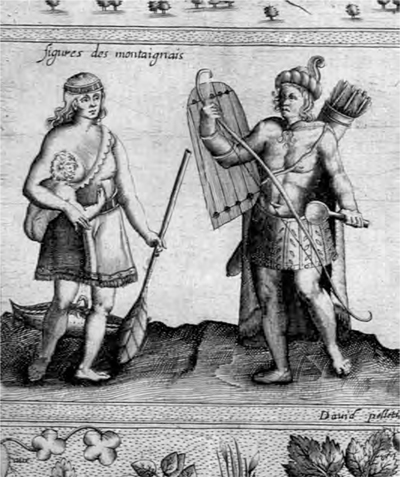
Montagnais family, early 1600s, as represented by Samuel de Champlain, 1612.
C anada, its been said, has been the victim of too much geography. The second largest country on earth, it stretches from the rainforest of Vancouver Island to the pebbled desert of the Arctic, from the Atlantic to the Pacific, from the latitude of northern California (though barely) to the Arctic Ocean. Canadas extent, from sea (east) to sea (west) to sea (north), is a rhetoricians dream and an administrators nightmare. Its prosperity, compared with most of the rest of the world, has saved many a politician the trouble of saying something original on occasions of public ceremony. Yet that prosperity, like the population, is unevenly distributed and heavily concentrated in certain favoured pockets. Fortunately, there arent too many people and theres enough prosperity to go around. Perhaps only its sparse population has saved Canada from becoming a political impossibility.
Geography has certainly helped limit Canadas population, but accidents of geology also played a part. The continents of North and South America took their current form millions of years ago, separated from Eurasia and Africa by thousands of kilometres of ocean except for a tiny stretch of shallow water, the Bering Strait, between Alaska and Siberia. Crucially, the Strait wouldnt always be covered in water, for as the climate cooled the northernmost regions of Eurasia and North America became forbiddingly cold. During the Pleistocene ice age most of the northern part of North America was covered in successive glaciations, further isolating the remaining habitable areas of the continentsouth of what is now the latitude of Washington, D.C.from the rest of the world. As water was absorbed into the huge glaciers, the sea level fell and the Bering land bridge grew very large.
The Americas in pre-glacial times boasted an impressive array of fauna, similar to those found in Eurasia and including horses, mastodons, and tigers. Many of these survived the ice age, the more so because no predators existed with the capacity to drive them to extinction. Yet there were differences from Eurasia too, in plant phyla and in the range of animals inhabiting the continent. One such difference was the absence of human ancestors.
The oldest traces of human ancestors have been found in Africa, dating back to long before the Pleistocene era. The first variety of modern humans, Homo sapiens, seems to have evolved around 150,000 years ago, also in Africa. Superseding other human varieties, Homo sapiens spread from Africa into Eurasia, reaching the northeastern corner of that vast land mass, eastern Siberia, about twenty thousand years ago. The climate was cold and the terrain icy, covered with an immense glacier just over three kilometres thick and spreading down from the North Pole. The seacoast was, however, considerably farther out than at present.
Not everything was covered with ice. In particular, the area between Siberia and Alaska (which scholars have dubbed Beringia) was dry, though cold and unpleasant. And even after crossing Beringia, early humans didnt find ice everywhere. Between fifteen thousand and thirteen thousand years ago the ice cap began to retract, opening an ice-free northsouth corridor along what is roughly the line of the Rocky Mountains. Scholars dispute how soon and how much this corridor opened, but certainly by about eleven thousand years ago it was possible to move from Alaska through the interior of northwestern North America, down to the grasslands of the Great Plains and beyond to the temperate climate of northern Mexico.
Next page
